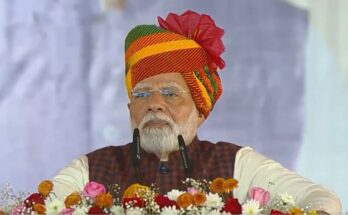A few days ago, during a panel discussion on selecting the best Indian ODI side at a webinar, my thoughts went towards thinking about Indias one-day cricket. The first international recognised match one is familiar which took place between England and Australia in Melbourne in 1971 and the first World Cup in 1975 in England.
However, one-day and limited-overs cricket was played all over the world at clubs, village greens and very much in the maidans and grounds in every city in India.
The game of cricket was played by amateurs only on holidays and on weekends and therefore the paucity of time was the reason to limit teams to certain number of overs. This practice still continues and are referred to as “friendly” matches among teams. Most cricket club sides always have a schedule of matches organised in their cricketing calendar for the season. Limited-overs matches are played on a Saturday afternoon and the more serious ones on Sunday.
Every Indian cricket player goes through this process and those who excel go on to play the higher level of the game. One, therefore, wondered as to why it took Indian cricket so many years to adapt to the limited-overs version of the game. After all it was the way cricket was played in every part of the country.
The 1983 World Cup win, played with a red ball, a 60 overs per side affair, with no field restrictions, was the turning point in Indian cricket. It was only after that win that Indian batsmen who played flambouyant aggressive cricket shots in the air were finally recognised as cricketers who could also bat.
The success of some of our earlier conservative batting legends had instilled in the minds of every Indian aspiring cricketer, that playing risky shots in the air was not the favored way to play the game. The coaches around the country had one common theme and that was that batsmen needed to play along the ground to be successful and the swashbuckling variety would not be acceptable in the higher grade of the game.
During one’s cricket playing days, one came across many of these brilliant stroke players, who were looked at more as ruffian cricketers rather than the gentleman’s variety that cricket revered and respected.
The 1983 Indian World Cup side had some daring batsmen such as Krish Srikanth, Kapil Dev, Kirti Azad, Sandeep Patil, Madan Lal and it was the way in which they played the game, that brought about a change in the mindset of Indian cricket.
This was the beginning of the new look and phase in the annals of Indian cricket. India emerged from having a conservative approach to one that showcased aggression. India, grew to become true world beaters by 1985. This was when they won the World Championship of Cricket in Australia.
Whether the sides of the 80’s were better or not than the ones of the last decade is a debate that may take years to fathom. What is, however, interesting would be to select the best Indian One Day XI from players who played for India in that format.
Sachin Tendulkar would naturally head the batting order along with the effortless stroke player, Rohit Sharma. This Mumbai pair on fire would have been a fabulous sight to watch and admire.
The next to follow would be the unsung all-rounder, who made his mark as the player of the World Cup in 1983, Mohinder Amarnath. He was a very deceptive medium-pace bowler as well as had the technique and strokes of a class batsman. A very astute cricketing brain behind the scenes.
Virat Kohli, the present Indian captain, would naturally be the focal point of batting at the very crucial position of number 4. He has proved himself to be one of the best in the world and his consistency has already put him as one of the greatest to play the game ever.
The player of the 2011 World Cup would be the next in line. Yuvraj Singh, who apart from his hard and mighty hitting power, was a clever, accurate left-arm spinner as well. His exploits as a batting game changer easily puts him ahead of many other genuine spinners.
The champion of champions of the 1985 World series, Ravi Shastri, is another left-arm spinner and a reliable batter to find a place in the dream XI. As a batsman he could be used as an opener, also he was useful to stem the rot or to play the mighty heave. His records and performances both with the bat and the ball and his flexibility as a utility player at any spot makes him a very valuable asset.
India’s best all-round cricketer, Kapil Dev, would be the next to follow. His brilliance makes him stand tall amongst the rest. Unfortunately, after his retirement, India has not had an all-rounder of his stature and class.
The calm and collected Mahendra Singh Dhoni is the next in line. He is not only a most effective wicketkeeper-batsman but also has the ideal credentials to captain the side. His computerised brain of analyzing situations, especially in the shorter format of the game and his impeccable temperament makes him the ideal leader of the dream Indian ODI XI.
India’s accurate and deceptive leg spinner, Anil Kumble, has always been a delight for any captain to have in his side. A miserly bowler when it comes to giving away runs and a very smart and intelligent brain to boot makes him the front line spinner of the side.
The two fast-bowling slots are the most difficult to select. India has had several in the last two decades. Earlier, India had some very useful bowlers who could bat as well. Madan Lal, Roger Binny, Manoj Prabhakar, Chetan Sharma, Karsan Ghavri, Abid Ali, Solkar and many others as well. All of them were super athletes and a boon for any captain.
However, the best left and right arm combination would be Zaheer Khan and the bowler who the world is presently claiming to be the best in the field, Jasprit Bumrah. Both these bowlers have shown that the skill and variation that they possess as death bowlers is what puts them high on the list.
Be it 1983, 1985, 2011 or 2019/20, Indian cricket was rich because of this final XI. Sachin Tendulkar, Rohit Sharma, Mohinder Amarnath, Virat Kohli, Yuvraj Singh, Ravi Shastri, Kapil Dev, M.S. Dhoni, Anil Kumble, Zaheer Khan and Jaspreet Bumrah. This to me would be an unconquerable eleven.
(Yajurvindra Singh is a former Test cricketer. Views expressed are personal)




